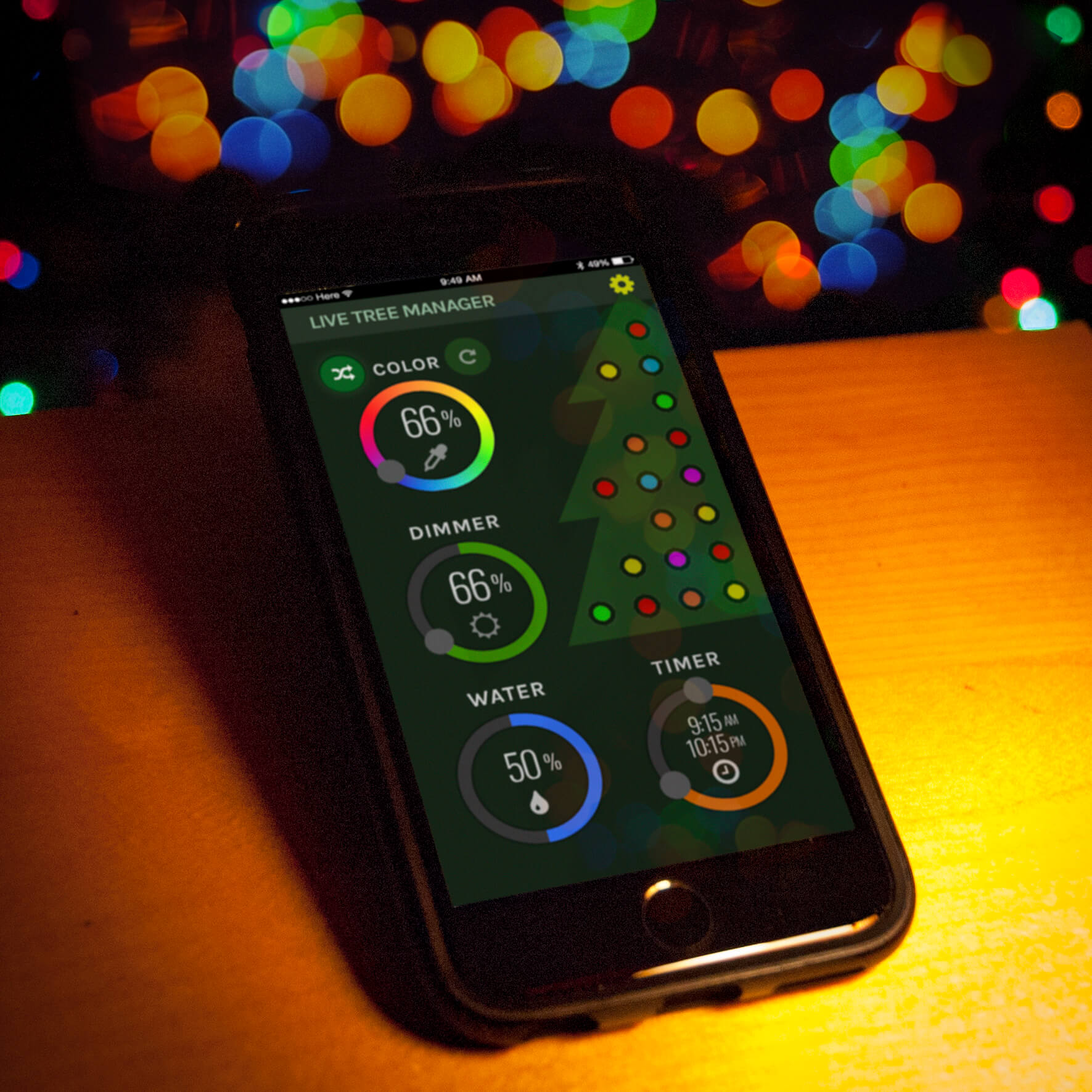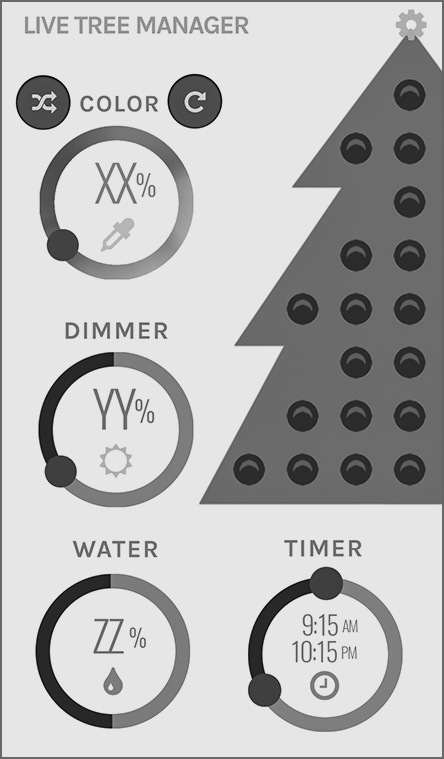Around the Fifth day of last Christmas, basking in the glow of the tree, I had a thought: “how hard would it be to get this thing on wi-fi?” So, I sketched out the Live Tree Manager, or LTM, on the back of a Toys ‘R’ Us gift receipt. It’s a hardware package and app that manages the lights, timing, and water consumption. It would look a little like this:

I believe there may be a crowdfund to start here — a product to completely automate Christmas trees.
Background
In 2004, I bought a fake tree immediately before Christmas and assembled it every one of the next 12 years. Compared to local NYC prices, it paid for itself four times over.
But recently I began to pine for the old-school thrill of hunting live trees. This involves the whole family stomping through frozen mud fields to find and hack down ‘the one’. Then we tie it on the car, spilling sap wide and far, and drive back home to lean it in the corner and ‘take care of it later.’
Why did I do this again? Oh, it’s a great memory. Specifically the kind that gets better as time wears on. But I digress…In the dark recess of the night, I decided the tree needed to be assimilated. And thus the technical stuff began…and sorry, I do get technical below (yay)…
The App
 Meant for a phone, it’s an HTML5 piece for now; native apps can follow if the project ever gets off the ground. I already designed the UI as a hero piece, and it shows off the major functions in one screen:
Meant for a phone, it’s an HTML5 piece for now; native apps can follow if the project ever gets off the ground. I already designed the UI as a hero piece, and it shows off the major functions in one screen:
Color: The color wheel lets you pick a single hue for all tree lights.
Shuffle Color: Randomize each light from a palette set in the Advanced settings.
Cycle Color: Selects solid, blink, twinkle, chase, and probably a couple modes I’d hate but include anyway.
Dimmer: Changes the overall brightness.
Water: shows estimated water level. Can change indication to warn.
Timer: Set On and Off times. In Advanced, other light combos can be defined and mixed into the Timer (e.g. Bright, Dim, On, Off, Chase, Solid, etc.)
Advanced: In Settings, one can pre-set a ‘multicolor’ palette of up to 16 colors. This is included for the people who hate the stupid pink bulb that always comes on standard incandescent sets. It also allows you to adjust the intensity of individual colors, to overcome the fact some colors are brighter than others in a typical LED string.
The Hardware
The heart of the system is a small embedded box. I have a spare Raspberry Pi to work with so the spec is currently a Pi Zero W. There’s about a dozen languages I could use for the programming of the box (call it TreeOS) but in this case I was feeling retro-trendy and chose node.js. The truly hip can use Go, I just haven’t had time to get avocados for my toast. There’s also a small LCD screen because you’ll never get away from configuring wi-fi.
The water management is fairly simple. There is a second container attached to the tree’s base by a hose, for two reasons: it vastly increases the water available, and you no longer have to crawl under the tree to water it. I actually did that in 2016 with a Rubbermaid pitcher and some poly hose.
The container has 4 (cheap) float switches at gradated levels. Four buys us redundancy, plus the calibrated points allow TreeOS to gauge water uptake and give more than empty/full on the gauge. The app can alarm when it’s low, very low, or exhausted.
The tree lights are a little more difficult. Individually addressable LEDs are available for as little as 20 cents per unit on a string, but they’re not on green wires. So, we’d have to have some of that fabricated. Also, 20 cents per light adds up if you have a big tree. At 100 lights per foot, the cost is $160 on an 8-foot tree.
Driving the lights out of the Pi Zero GPIO is easy. Each string is addressable by unit, so it’s essentially a serial light bus. The catch is that the Zero can signal the string, just not power it. We have to provide separate power to drive that many lights.
Last is a DC power supply. Laptop-style bricks handle up to 100 watts but the string will probably take closer to 200, so a bigger box is in order. Some electrical engineering needs to go on there.
In Summation/The Forest for the Trees
It’s already Halloween, so it would have to be a ‘next year’ effort if one was to hit a Christmas delivery. Plus time to make a cool video and build buzz…looks like I’ll have to build the prototype like now.
Thinking ahead to the 2.0 roadmap, the sky becomes the limit: standards interoperability, MFi certification, HomeKit integration, voice skills for Alexa and Google.
[dot_recommends]
Frank Sikernitsky
An engineer at heart, Frank Sikernitsky has been a startup Founder, a startup Janitor, a CEO, at CIO, an International Bank Officer, an Author, a Cartoonist, an Editor-In-Chief, and for a little while a Morning Drive-Time radio personality.
![Frank [Build Stuff]](https://frank.sikernitsky.com/wp-content/uploads/2017/07/fbuildblk.png)
![Frank [Build Stuff] White](https://frank.sikernitsky.com/wp-content/uploads/2017/07/fbuildwht.png)